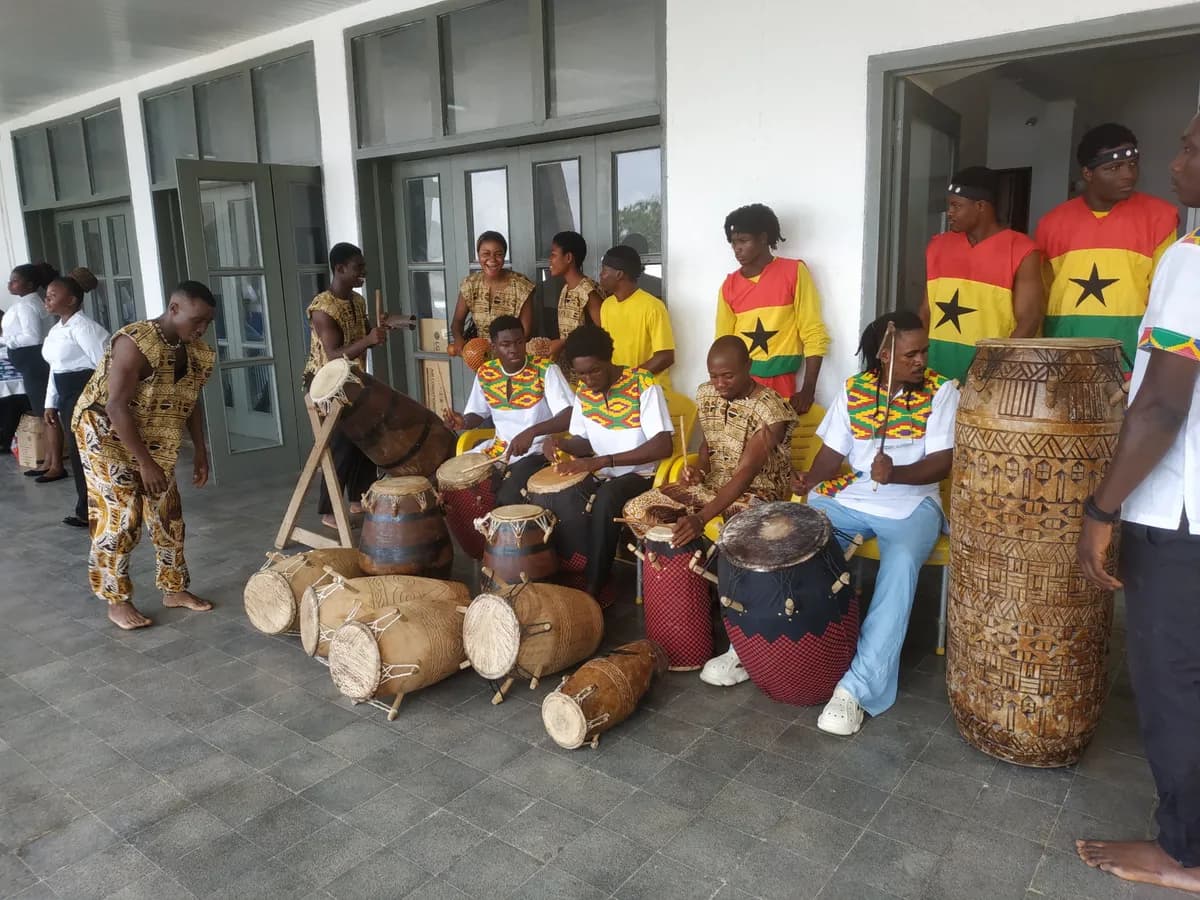Just as the sun dips below its stunning skyline and lush landscapes, the Volta Region of Ghana also comes alive with the enchanting rhythms of traditional drum and dance that pulses through its communities. 'Borborbor', 'gahu', 'agbadza, 'atsiagbekor, 'gadzo', 'kinka', and drum appellations, are some popular folk music offering visitors a chance to immerse themselves in the beats and rhythms that have defined the local communities for centuries.
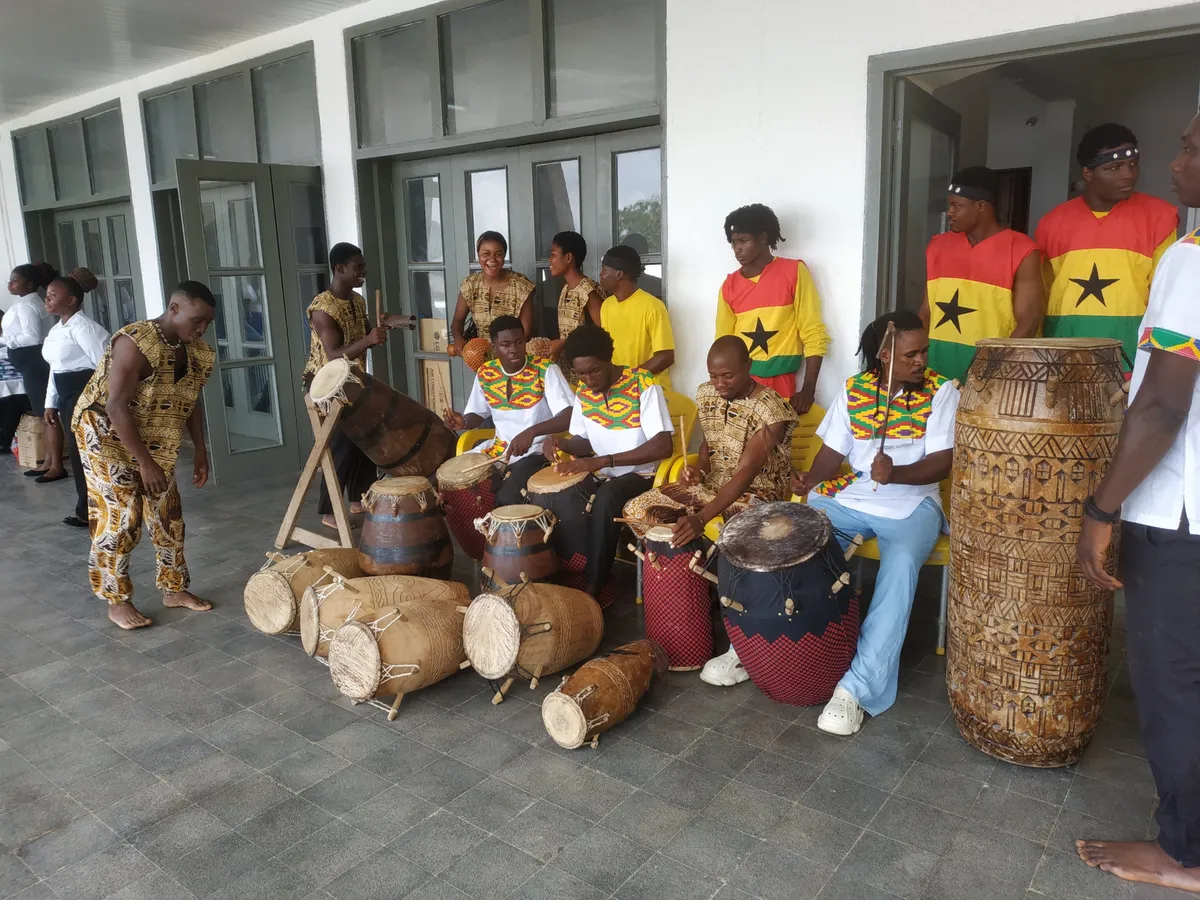
In Volta villages, these raw ballad performances punctuate the everyday with remarkable displays of visual and auditory elements. They are intertwined with the rhythms and cycles of life, depicting aspects of society, nature, agriculture, shrine rituals, and historical ceremonies.
Volta drums showcase an array of percussive instruments that encompass barrel drums, iron bells, and rattles. The composition includes elements such as the off-beat kagan (high-pitched accompaniment drum with the high-pitched kidi – a smaller drum that responds to the lead drum's pattern with interlocking rhythms. The lead drum (sogo) signals the dancer and creates intricate melodies and rhythms, employing a rich tonal and timbral tempo.
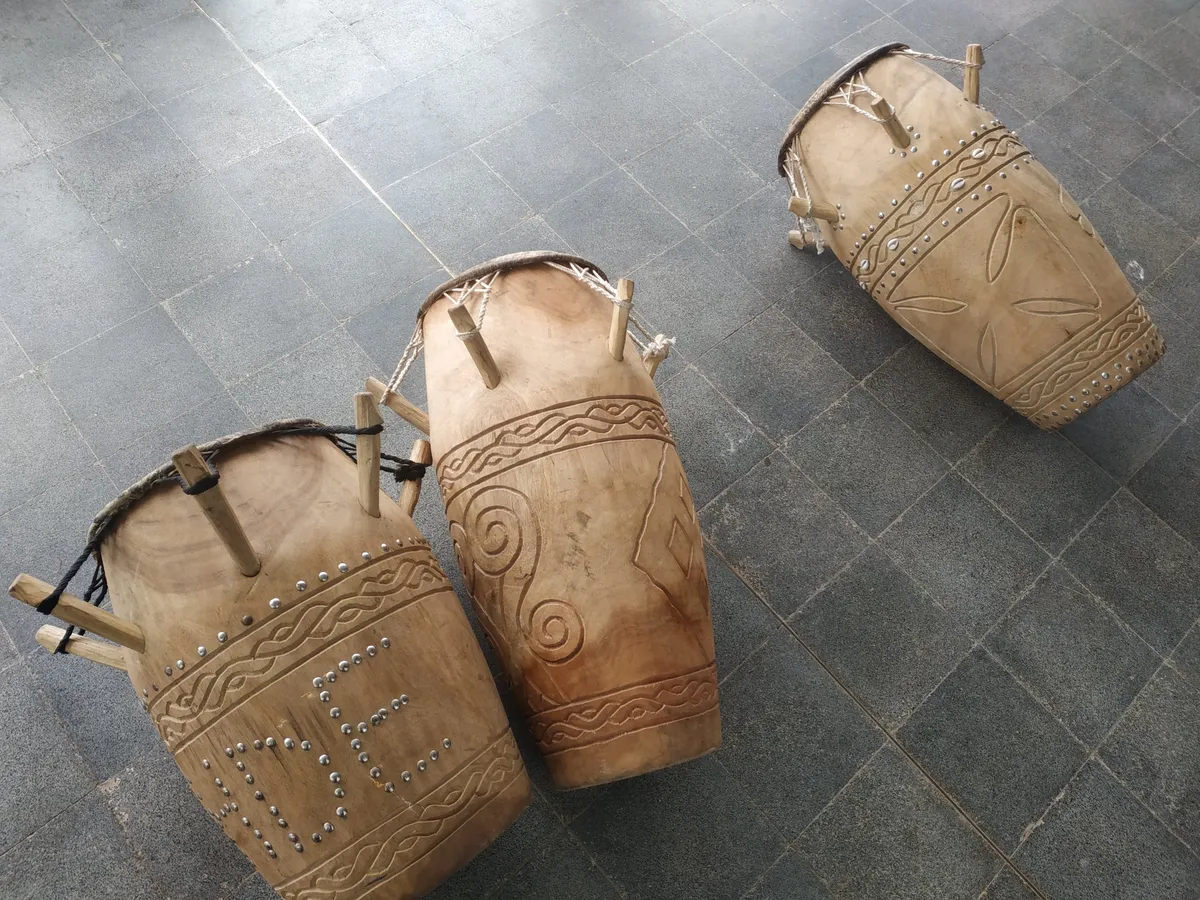
Alongside the drums are 'gankogui', a double-flared metal that is handheld and is played using a striker rod. This sonic tapestry is further enriched by the 'axatse' – a dried gourd wrapped in a mesh of seeds or beads. It is shaken by the dancers and produces a jingling sound that adds a unique rhythmic element to the music.
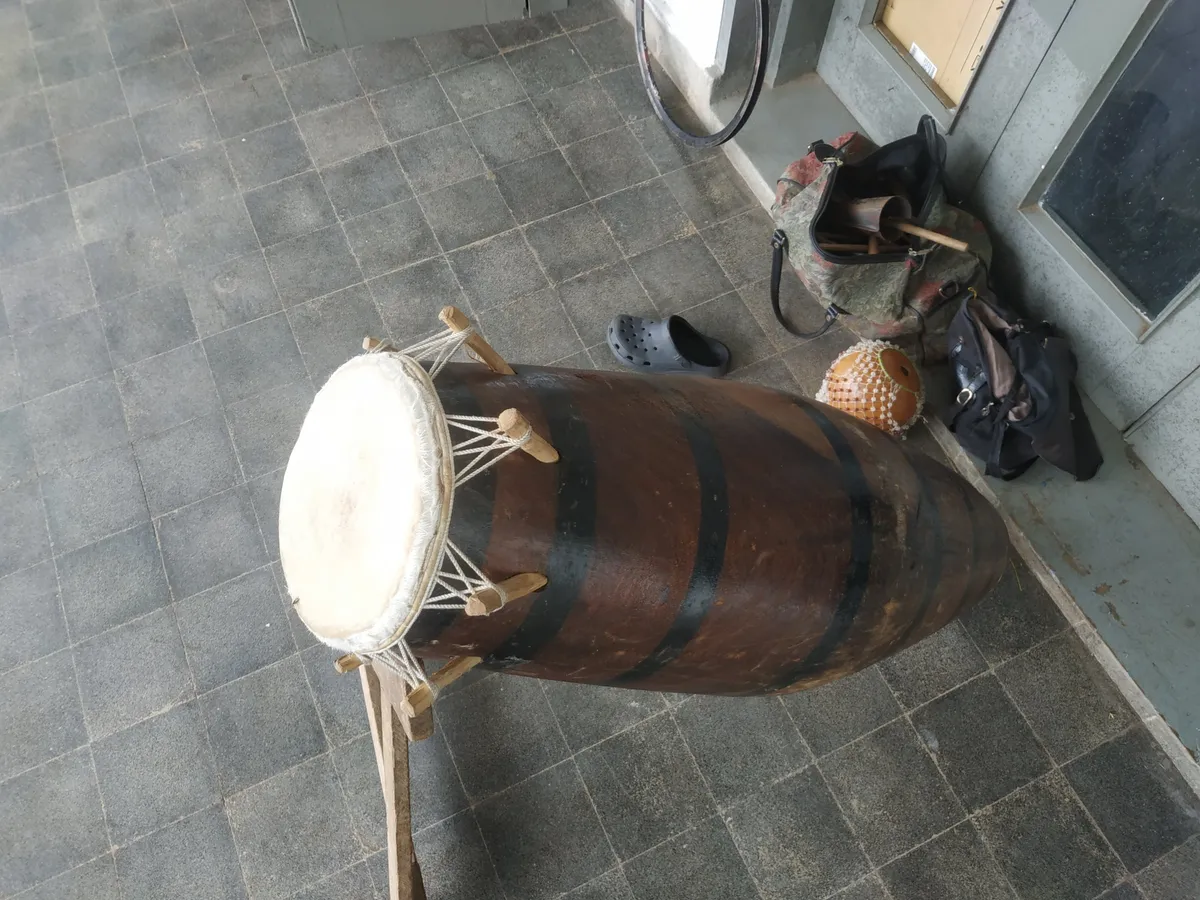
This dynamic art form, rooted in centuries-old tradition, is more than just entertainment—it's a powerful window into the region's history, identity, and spirit. The beats and rhythms have the power to evoke emotions, tell stories, and create a profound connection between participants and the cultural heritage of the region.
Borborbor, translating to "vibrating rhythms," it embodies a jubilant expression of both joy and unity. Dancers, clad in colorful traditional costumes form rhythmic cycles.
During the borborbor dance, the waist twerking of women is a skillful movement that adds a dynamic element to the performance. As the dancers sway their hips and swirl their handkerchiefs in sync with the music, their movements create an engaging spectacle for the audience to enjoy.
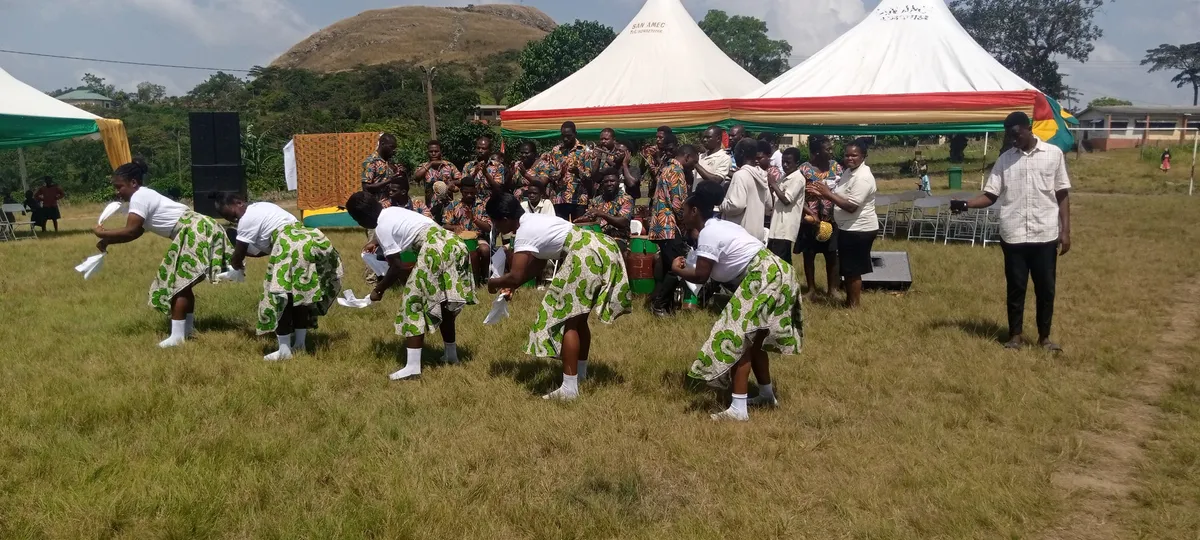
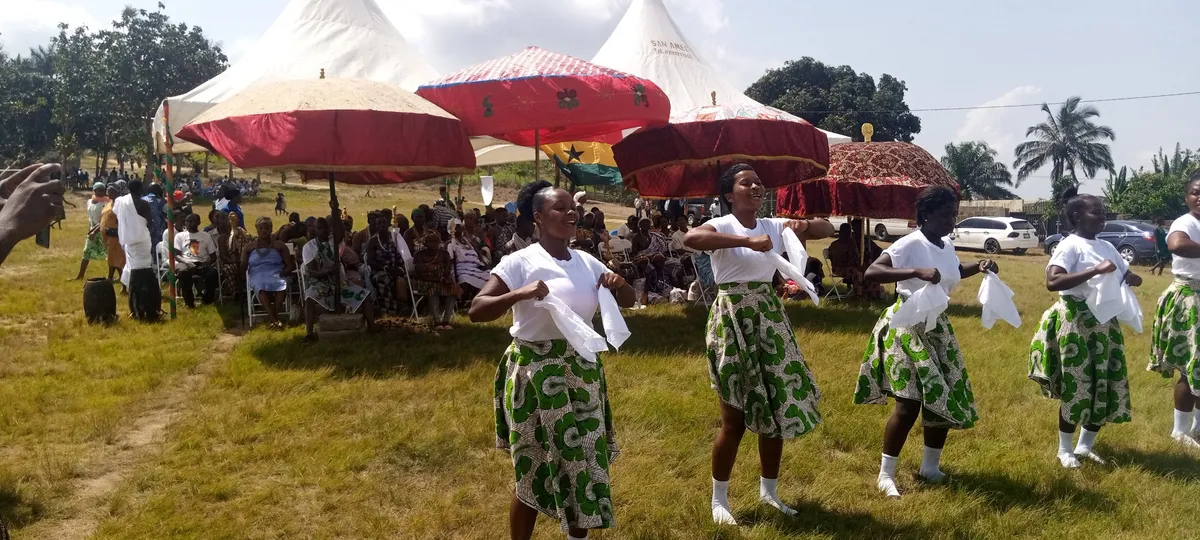
The drummers prove of prowess on the drum is a sight to behold, and the clappers squadron leaves much to desire. Borborbor offers a perfect platform that connects a deep sense of community in the Volta Region.
Agbadza on the other hand, is a signature dance that honors the Ewe people's history and resilience. The brisk movements and intricate steps tell stories of bravery and triumph over adversity. The beats of the drums echo the heartbeat of the community, invoking a sense of belonging that transcends language barriers.
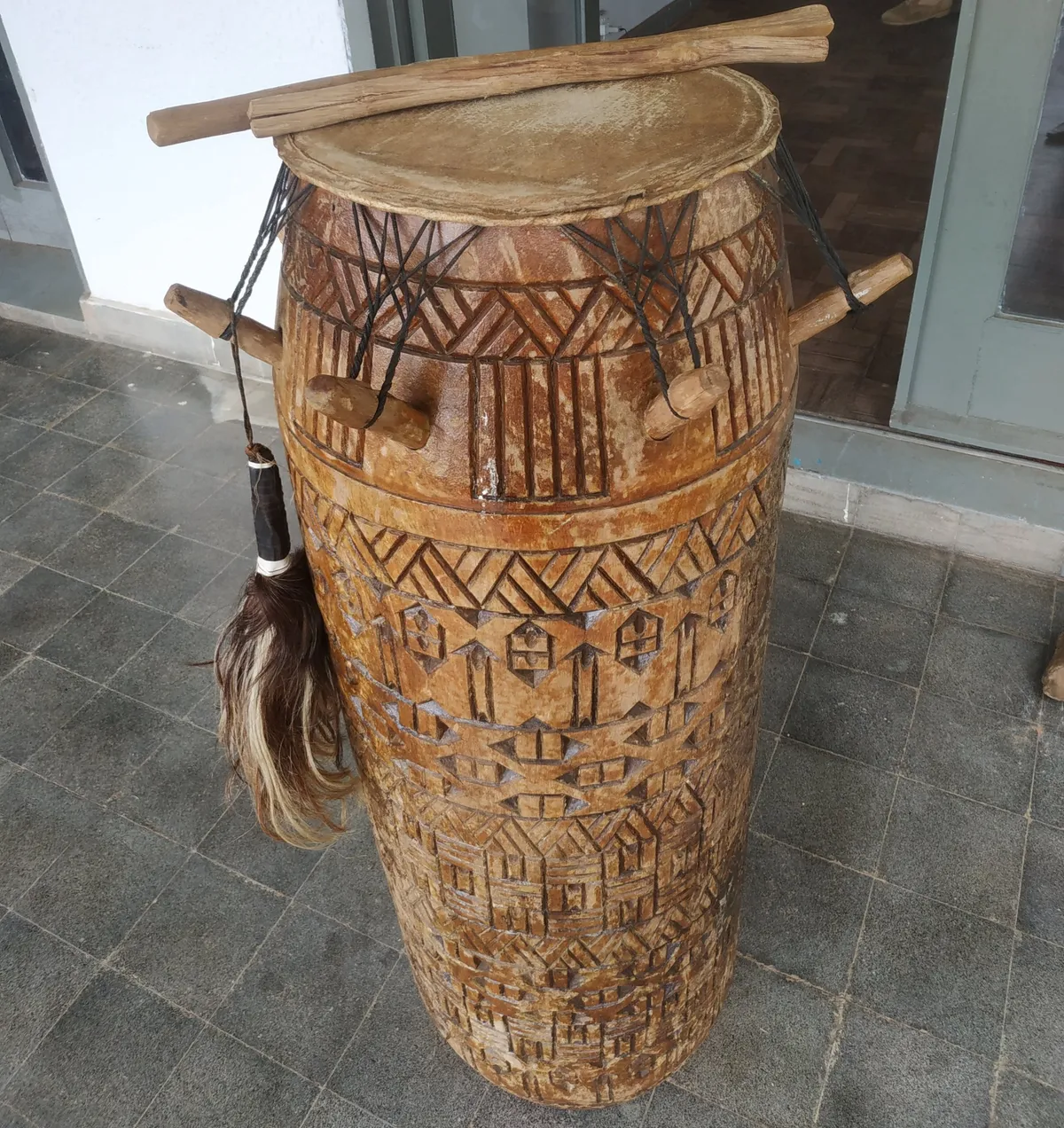
Agbadza is performed with several traditional percussion instruments that work together to create the rhythmic beats characteristic of the dance. Components of the drum set include kagan, axatse, and atsimevu producing deep resonant tones.
"Atsimevu (sogo)" is the prominent barrel-shaped drum that assumes the role of the lead drum in agbadza performances, with its primary player referred to as the "Azagunor."
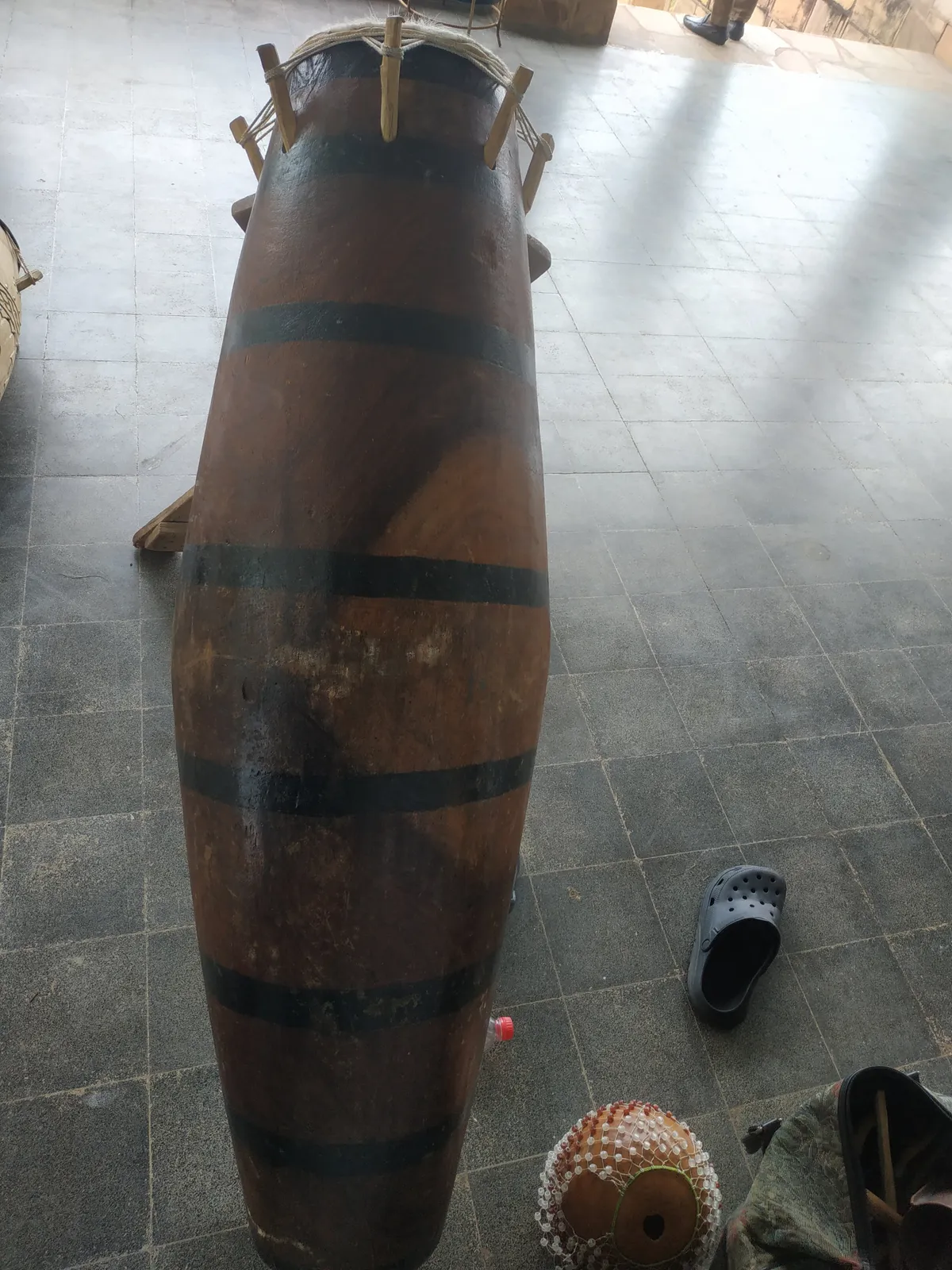
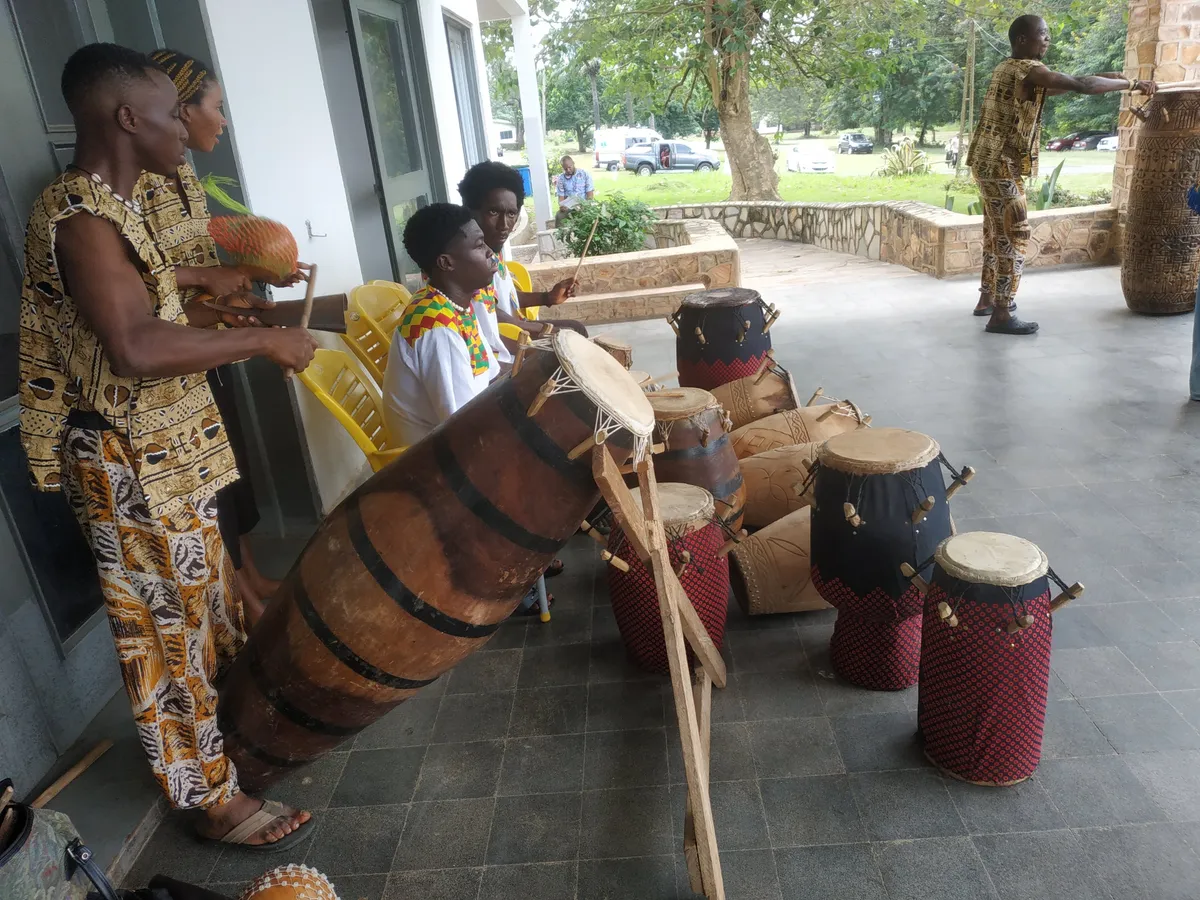
Clapping plays an essential role in agbadza performance. Dancers and audience members clap their hands in sync with the rhythm, creating a sense of community participation and enhancing the overall energy of the dance. The combination of deep tones, high pitches, intricate rhythms, and beats create a captivating musical backdrop that inspires dancers and engages the audience.
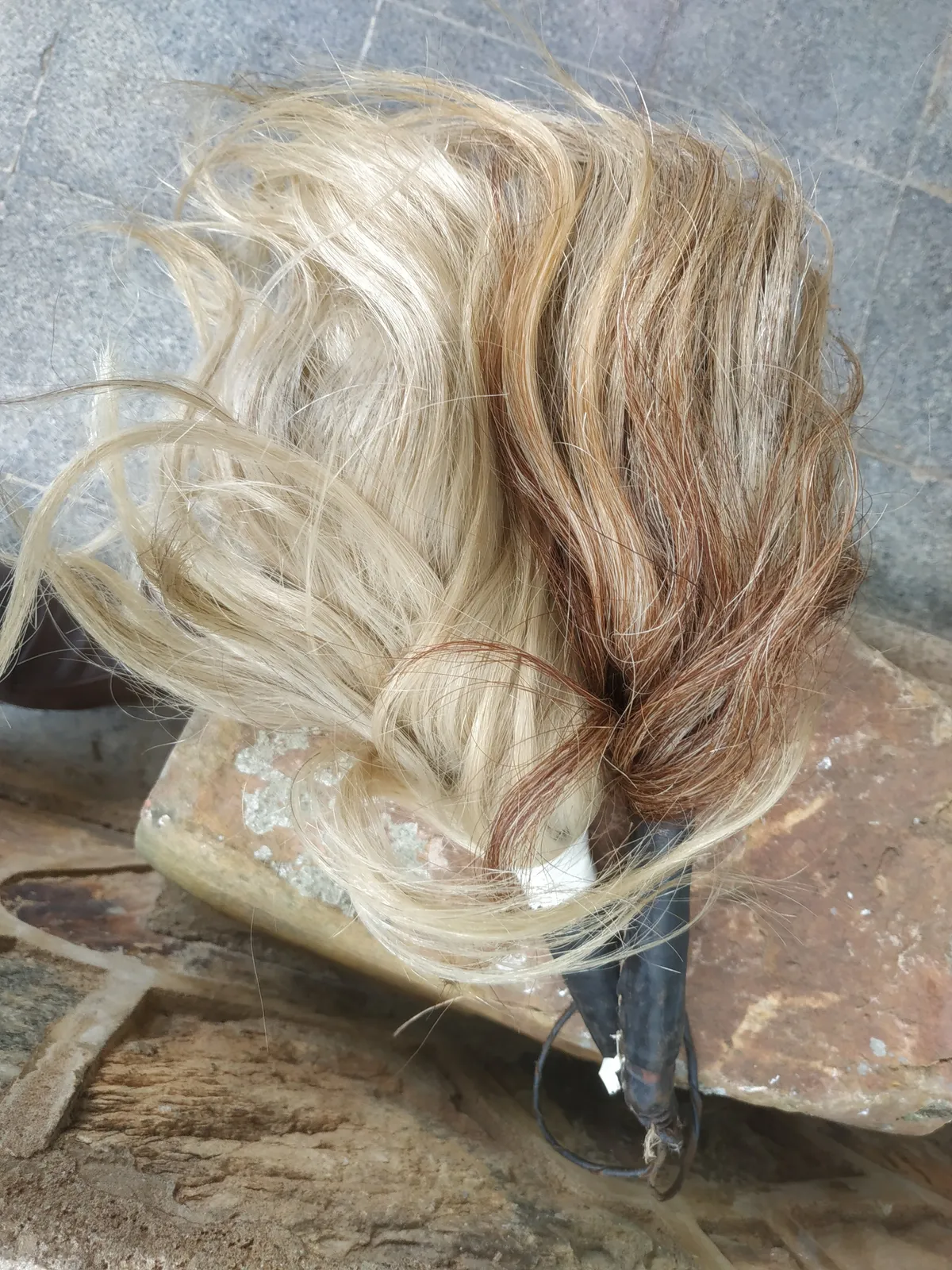
Atsiagbekor: With its roots in the Anlo-Ewe culture, atsiagbekor is a dance of war and victory. Dancers demonstrate their strength and prowess while paying homage to their brave ancestors. The drumming and synchronized movements evoke a sense of power and unity, connecting participants to the past.
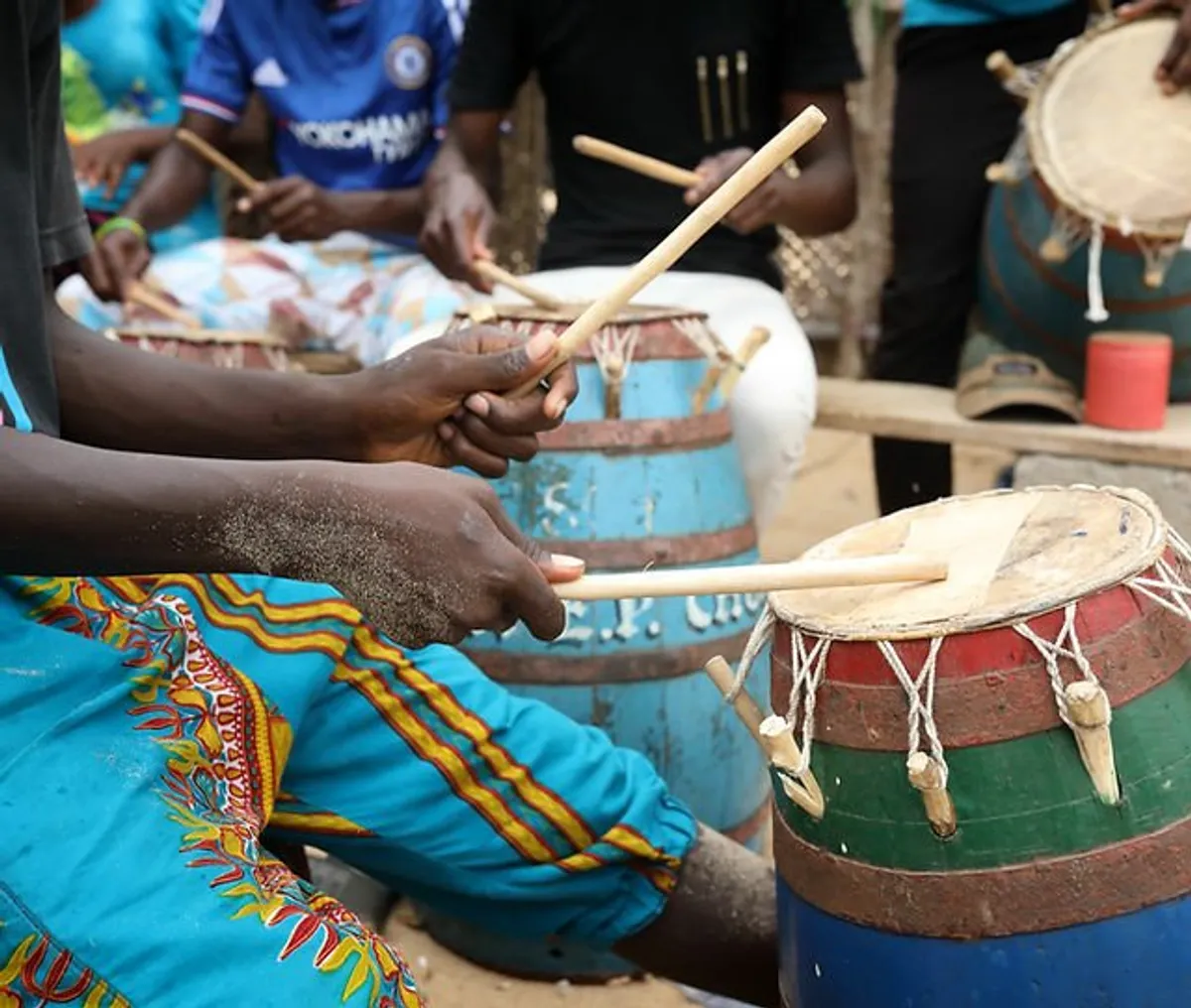
Kinka, a widely embraced secular dance-drumming of the Ewe origin dating back to 1950, encapsulates themes that resonate with the contemporary aspirations of the younger generation.
This expressive art form by its utilization of repetitive metaphorical phrases, serves as a hallmark of this communal form of entertainment. The combination of kpanlogo drums, djembe drums, bells, shakers, clapping, and vocalizations results in a rich musical arrangement that energizes the dancers and captivates the audience. The rhythmic interplay between different percussion instruments creates a lively atmosphere that is characteristic of kinka dance performance.
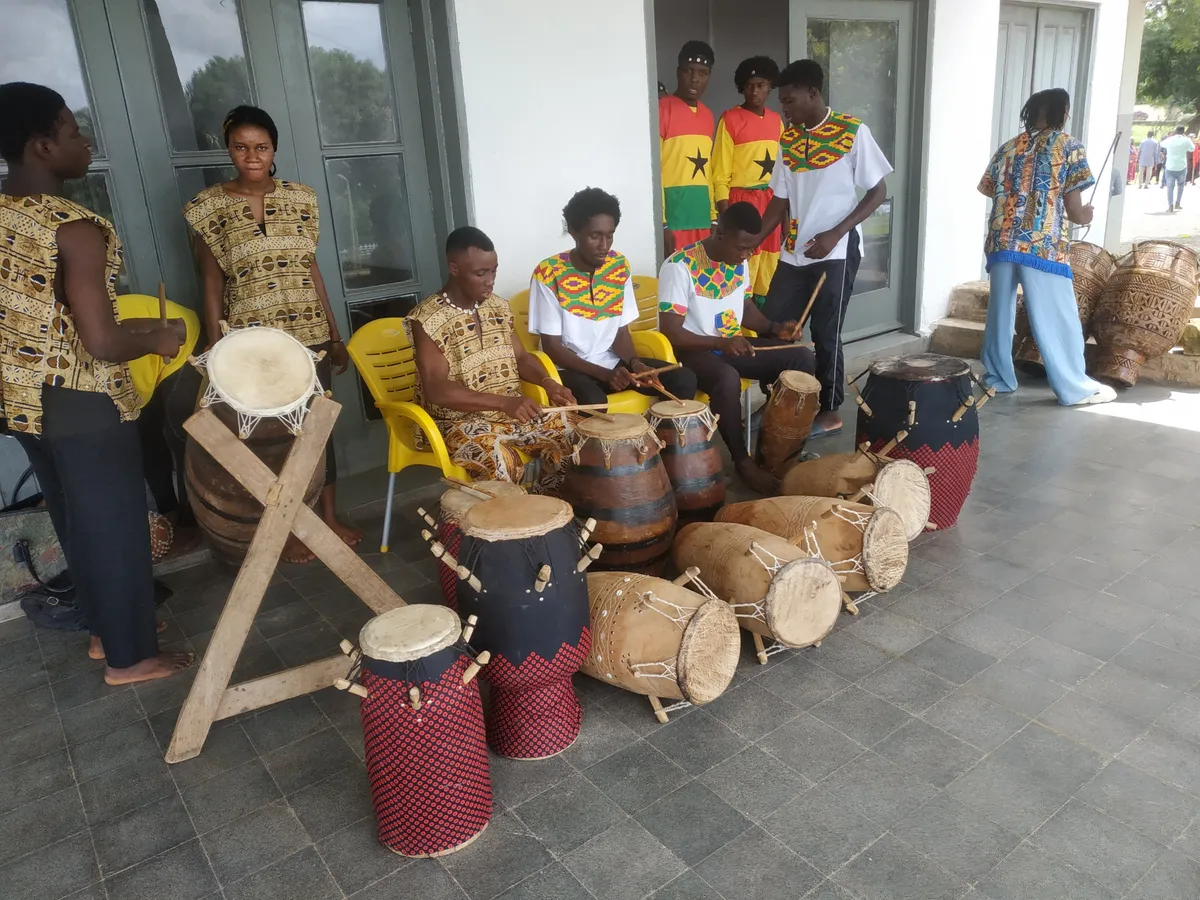
The drum appellations, a form of poetic communication, bring a unique touch to the traditional drum and dance experience. Atumpani also popular with the Akans in Ghana, is the main talking drums with a large, two-headed drums made from hollowed-out tree trunks covered with animal hide. They come in pairs, with the 'male' and 'female' drums producing distinct tones.
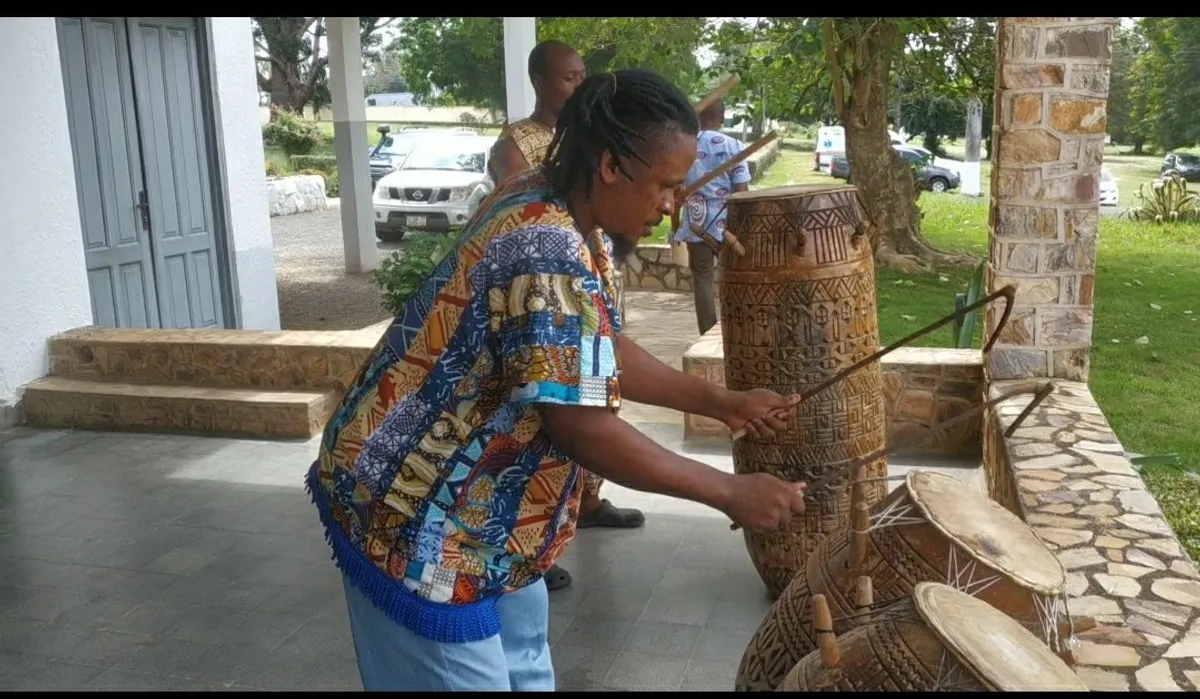
Atumpani drums are strictly played using angular sticks and are known for their deep and resonant sounds. They are used to convey specific messages and are often played during drum appellations to communicate greetings and honor traditional leaders and individual dignitaries.
For travelers seeking an authentic cultural experience, the traditional drum and dance sessions in the Volta Region are a must-see and must-experience attraction.
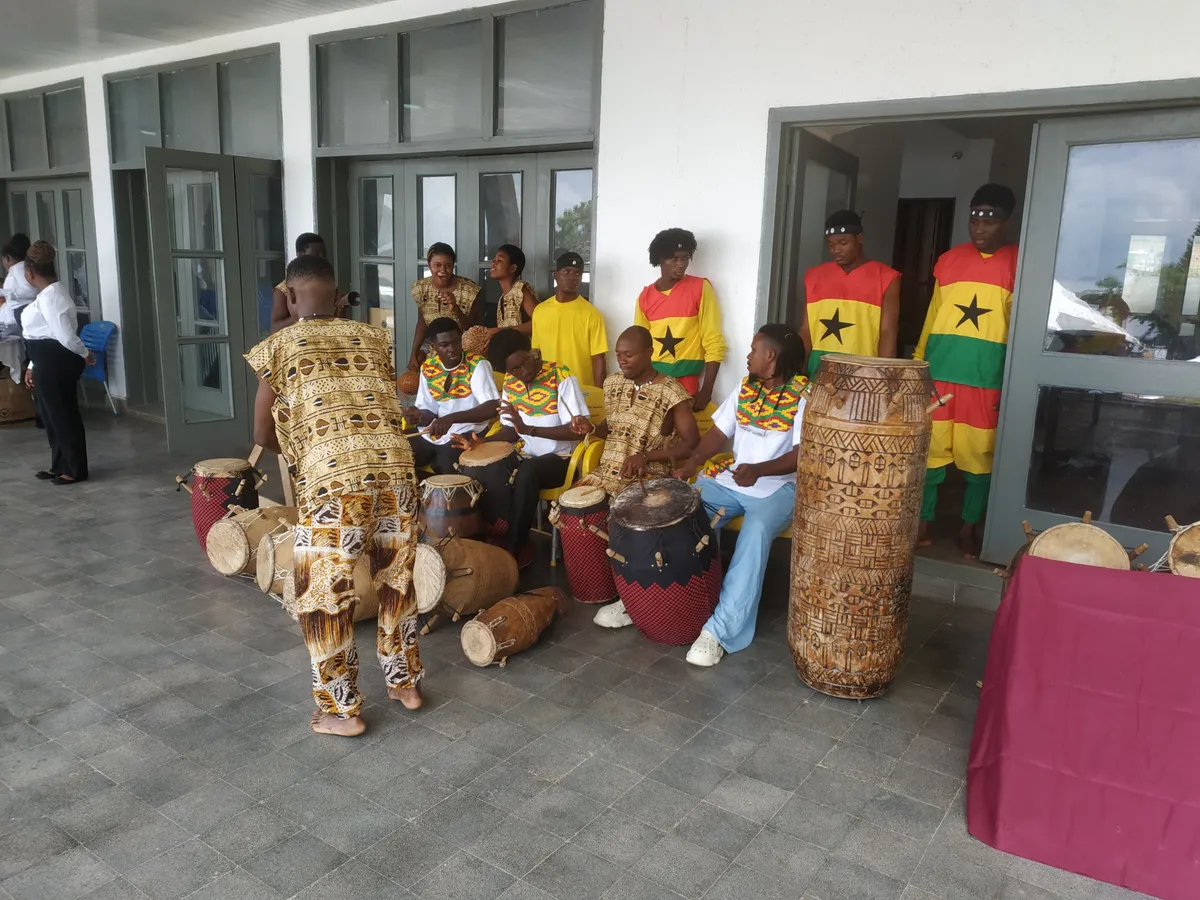
The energy, passion, and stories that come alive on these stages will find yourself not just observing, but becoming a part of the local story. Immerse yourself in the vibrant rhythms, and feel the pulse of the community as you connect with a centuries-old heritage. Don't miss the opportunity to explore the drum lessons of Borborbor, Agbadza, and Atsiagbekor, that bring the stories of Volta to life.
About the writer: Vincent is the Managing Director at MoodofHope Tours. He is an aspiring investigative journalist and a dynamic travel entrepreneur. He holds the distinction of being your reliable certified tour guide in Ghana and assumes the role of Founding President within a local volunteer tourism club. To get in touch, kindly reach out via email at kevinnugah@gmail.com.

